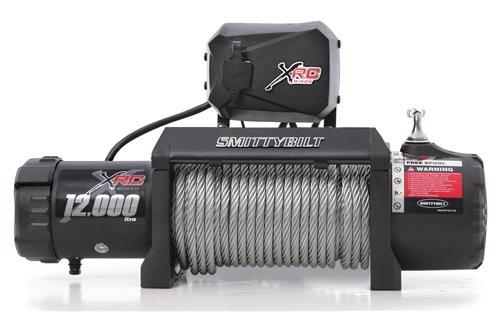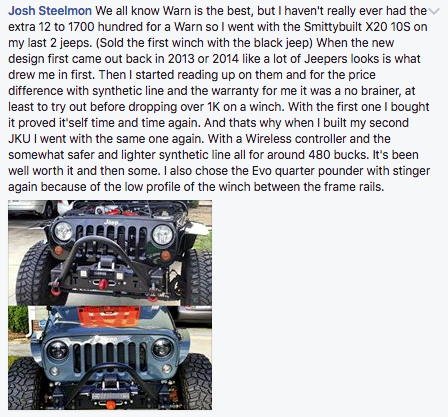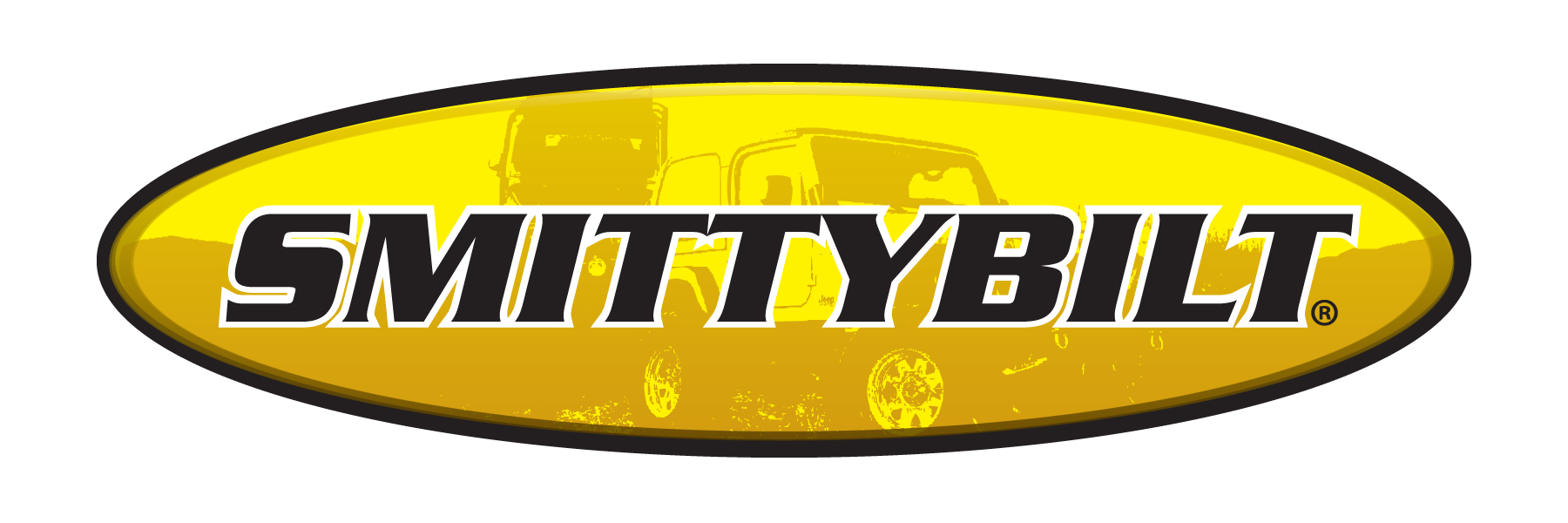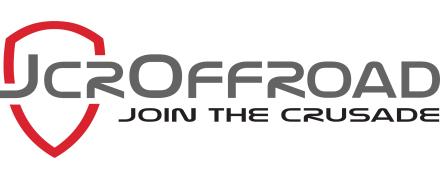Choosing a Winch is Really a Cinch!: Which One is the Right One for You?
Posted by Gillian Fournier on 11th May 2017
It's that time again! Wheeling season is finally here (in New England, at least) and everyone is getting ready to either upgrade or properly prepare their vehicles for the trails. With the sport of off-roading, overlanding and beach cruising becoming more and more popular and clubs/organizations growing exponentially, recovery gear is now a requirement close to everywhere. One of the first things that comes to mind when I think of recovery is a winch. I once again took to social media, Facebook, Twitter and forums to find out some pros and cons of each winch type as well as what type people are running and why!

Winches come in all shapes and sizes, most being a universal fit for Jeeps, trucks and SUVs. When perusing through forums, you may notice terms such as centered or off-set, electronic or manual, roller or hawse, steel or synthetic and so on. These can be a lot to take in first, but once you know exactly what you're looking for and what will work best for you, everything will fall into place. In the meantime, I can help to break it down.

There are certain things to consider when it comes to shopping for a winch and these factors can play a major role in buying the perfect winch- strength, weather resistance, ease of repair, weight and safety.



Steel/Cable: The industry standard cable rope is made from 5/16" aircraft grade steel and is best used in highly abrasive terrain such as rocks and sand.
Pros
- More affordable and budget friendly
- More durable and long lasting
- Easy maintenance
- Can be used for recovery and utility purposes
- Resists abrasions against rocks
- Ideal for tough recoveries in tight places where friction can be an issue
- Can use both roller and hawse fairleads (although most come standard with a roller included)
Cons
- Weight
- Cannot float making water and mud recoveries more time consuming and strenuous
- Habit of rusting over time (if not properly cared for)
- Prone to kinks which makes the line more difficult to spool and decreases the strength
- Can develop sharp burrs or splinters
- Dangerous, if not deadly, if the line snaps back
- Cannot be repaired on-site if breakage occurs
Proper Maintenance and Safety Precautions for Cable Lines:
- Fold a heavy blanket over the center of the line when recovering, This helps to absorb the potential energy that is released when/if a breakage occurs
- Properly maintain the winch line; keep an eye out for burrs, rust, kinks or weakened spots
- Make sure, other than the person doing the recovery, nobody is standing near the winch line
- Wear heavy duty gloves when operating the cable line, as steel lines have a tendency to fray, burr or splinter
Synthetic: Synthetic winch line is becoming a more and more desired option in the off-road world as it is safer and lightweight. Most synthetic lines are commonly sold in 3/8" diameter and best used in less abrasive recovery situations.
Pro's:
- Lightweight
- More welcome in the community
- High flexibility rating
- Can be repaired if breakage occurs, using proper braiding techniques
- Easy to handle
- Doesn't store as much potential energy
- Safer for vehicles, people and the environment
- Buoyant in mud and water
- Uses hawse fairleads (most synthetic winches come with a hawse fairlead included)
Con's:
- More expensive
- Difficult to visually detect weakened spots
- Will knot if not cared for properly
- Susceptible to UV, chemical and abrasion damages
- Can hold water, causing weight issues and freezing over
- Needs to be frequently and properly maintained
Proper Maintenance and Safety Precautions for Synthetic Lines:
- Wash the line, frequently, with soap and water to remove sand, grit and debris
- Use an abrasion sleeve to protect the winch line, especially during situations where the line may rub against rocks, trees, vehicles, obstacles, etc.
- Use a removable winch cover to protect the line from harmful UV rays, chemicals, debris and abrasions
- Use a hawse fairlead to protect the line and keep it intact
Winch Terminology:
Offset Winch- the winch drum is off-centered
Center Winch- the winch drum is centered
Fairlead- a device meant to guide the rope or cable line and help it from moving laterally. The fairlead minimizes damage to the line while it spools through the winch mount or bumper
Roller- a roller fairlead is used in conjunction with steel/cable lines (and more recently, with synthetic as well).
Hawse- a hawse fairlead is used in conjunction with synthetic lines
Electric/Electronic Winch- operates by remote control
Manual Winch- operates by hand
Rated Line Pull- the rated line pulling capacity that a single line can handle without using a snatch block or other recovery equipment
Free Spooling- manually unspooling the winch line from the drum. This is achieved by pulling on the free end of the line while the cable drum is disconnected.


In the end, the true choice of winch types lies solely in the hands of the operator. It all comes down to budget, location and what setup will work best for what you will be doing. There is no right or wrong choice when it comes to buying a winch, but remember, in the words of WARN Industries, "Go Prepared".
To view our full line of winches and accessories, click here!






